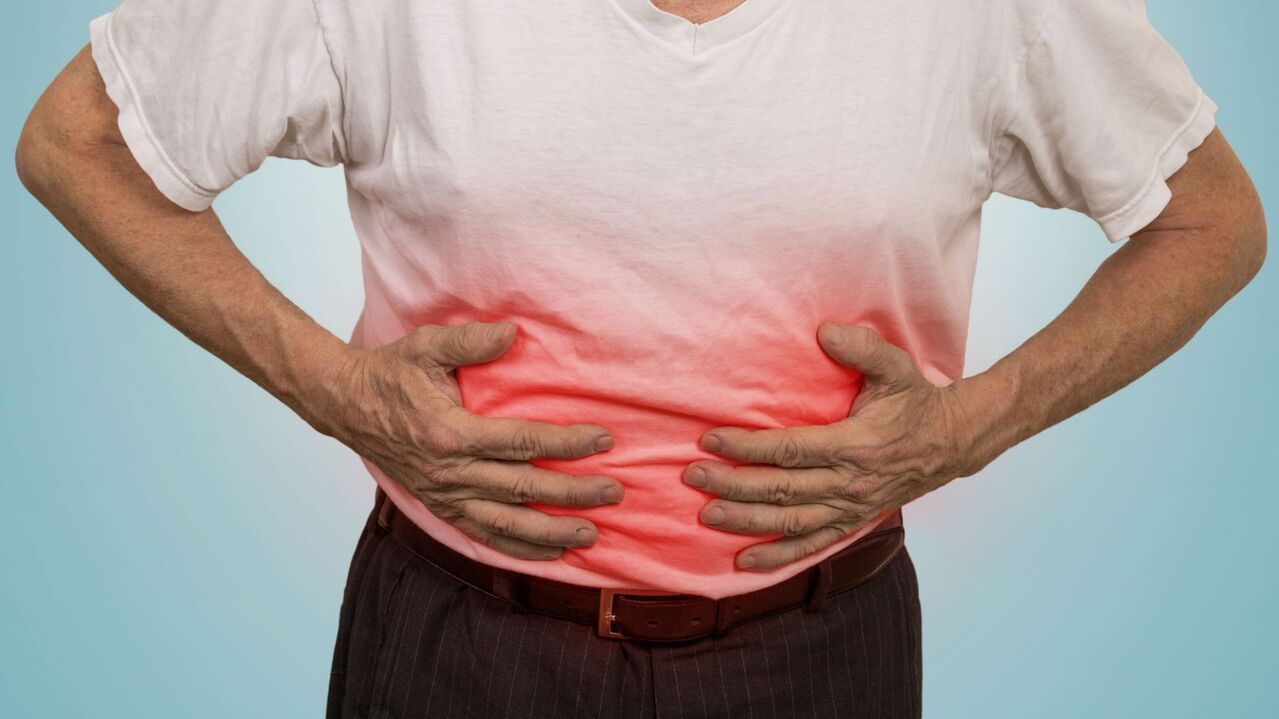
Pancreatitis is an inflammation of the pancreas. It produces enzymes involved in the breakdown of proteins, fats and carbohydrates. It also produces insulin, which regulates blood sugar. Errors in nutrition, cravings for spicy and fatty foods, smoking and alcohol abuse, uncontrolled drug intake - all these factors contribute to the development of pancreatitis.
How to recognize pancreatitis and what diets the patient should follow, we will tell in this article.
How do you know if you have pancreatitis?
Pancreatitis can be acute or chronic. Its symptoms vary depending on the form.
The acute form is manifested by severe pain in the upper abdomen. Pain syndrome occurs when you have eaten something fatty or drank alcohol. Beginning of nausea and vomiting, stool problems.
In chronic pancreatitis, the pain is localized to the top of the peritoneum, radiating to the back, to the left of the chest, to the lower abdomen. Discomfort is also observed after consuming a lot of fat, heavy food, alcohol, as well as due to frequent stress.
Signs of acute pancreatitis:
- Severe persistent pain all around.
- Increase body temperature.
- Blood pressure spiked.
- Pale or yellow skin.
- Severe vomiting that does not improve.
- Constipation, flatulence, salivation.
Signs of chronic pancreatitis:
- Abdominal pain after eating. Local or encircled, extending to the rear.
- Heat soothes the stomach, while cold soothes the pain.
- The patient has an obligatory position - a knee-elbow position, or a sitting position with a forward bend.
- Vomiting, diarrhea.
- Weight loss.
It doesn't matter what form you have - acute or chronic. You need to be selective about the foods you eat and stick to your diet.
What diet is indicated for pancreatitis?
To prevent exacerbations of pancreatitis, the following dietary modifications should be made:
- Eat 4-5 times a day with an even distribution of fatty foods in the diet;
- refuses to eat too much;
- balancing diet;
- limiting saturated fat and cholesterol;
- include in the diet a sufficient amount of vegetable fiber - cereals, vegetables and fruits;
- eat a variety of foods low in saturated fat and cholesterol (unrefined vegetable fats are restricted only to overweight people).
What products are allowed?
It is a mistake to think that patients with pancreatitis "lack" delicious and varied food. In fact, the list of allowed foods is quite extensive.
So you can eat:
- Dry white bread, biscuits.
- Vegetable soup with noodles, semolina, oatmeal.
- Lean.
- Lean fish, aspic.
- Porridge (buckwheat (purified), oatmeal, semolina, rice).
- Cheese, cereal pudding and casserole.
- Milk and fermented milk products with no more than 2% fat.
- Egg.
- Vegetable.
- Ripe and non-sour fruits and berries.
- Butter and vegetable oil.
- Weak tea, mineral water, rosehip broth, juice diluted with water in a ratio of 50 to 50).
Food needs to be cleaned, boiled, steamed. You cannot eat hot and cold food. The optimal temperature is 30-50 ° C. Do not overeat, eat in small portions.
What foods should be thrown away?
An exacerbation occurs when nutrition and intake are disturbed:
- fried, fatty food,
- hot spices,
- a large number of raw vegetables, fruits,
- muffins and sweets (pastries, pies, cakes),
- alcohol,
- gas drink,
- whole milk
Sample menu for patients with pancreatitis
- Breakfast: Milk porridge / milk soup with noodles / boiled noodles. Milk tea. Dry bread.
- Dinner: Vegetable soup, boiled rice / mashed potatoes, boiled fish / meat. Tea.
- Afternoon snack: Frozen casserole, jelly/jelly.
- Dinner: vegetable salad with olive oil, boiled meat/fish, jelly.
Necessary snacks. Eat baked apples, low-fat cheeses, and cookies between meals.
Note that medication and diet are equally important. Nutrition therapy brings the pancreas back to normal, avoiding exacerbations of the disease. In this case, do not engage in self-treatment! If you have symptoms of pancreatitis, see your doctor.
































































